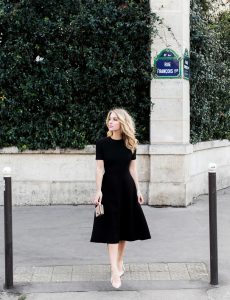An emergency fund can be the key to a more secure financial future. Having even a small cushion to fall back on might just be the single most important thing you can do to protect your finances.
As humans, our lives are incredibly complicated and you never know what is going to happen tomorrow. In this post, I’m going to outline some tips and tricks as well as some habits that you can add to your life to try and make it happen! Let’s change your life.
Our blog posts often contain affiliate links, you can learn more in our very long (and very boring) affiliate disclosure!
Table of Contents
What is an Emergency Fund?
In the simplest terms, an emergency fund is a stash of money that you keep completely separate from your “everyday money” in order to cover unexpected expenses that you couldn’t have planned for.
The best thing about an emergency fund is that it stops you from having to use credit or ask family members when something unexpected happens.
Why Do You Need an Emergency Fund?
Sometimes life can get a little crazy and you can’t always be prepared for it. We never know what’s going to happen tomorrow and if we aren’t at least sort-of prepared for the unexpected it can really throw a wrench into our entire lives.
Here are a few things that could possibly happen where you might need some quick cash:
- Your family’s only car breaks down and you have no way to get to work or get your kids to school
- Your work hours get cut in half or you lose your job
- Someone in your family needs emergency medical attention
- Your landlord sells you home and you unexpectedly have to move
- You need an emergency plane ticket to go to a loved one’s funeral
- etc.
All of these situations are something that you can’t always be prepared for. If you have an emergency fund set up you can be a little more successful at dealing with them. When you have some money set aside you’re less likely to make bad money decisions like payday loans and credit cards.
“I have an emergency fund that I used to help a family member through an unexpected crisis. Being able to turn her children’s tears to smiles meant everything to me, I’m so thankful that I had the means to help her out. After the family member got back on her feet she was inspired to start her own emergency fund after she saw how my fund helped her” – Cara Palmer from carapalmer.com
How Much Should be in Your Emergency Fund?
In this post, we are focusing on a $1000 starter emergency fund because it’s a great jumping off point. I decided to focus just on $1000 because most people aren’t able to get as much as $500 together if something bad happened, so having $1000 prepared would change their entire lives.
Most financial advisors will tell you to have at least 3-6 months of expenses stowed away for emergencies is ideal. Why? Because 3-6 months is a decent amount of time to get you back up on your feet if you were to lose a job or have a medical emergency. If you build up 3-6 months of expenses you’ll at least be able to weather the storm without having to sell your home or destroy your credit.
If you feel like you don’t even have two pennies to rub together, just focus on a smaller goal like $1000 set aside. Let’s make that happen for you!
When Can You Dip Into Your Emergency Fund?
The first step to a successful emergency fund is the ability to distinguish between your wants and you needs. You need to understand that an emergency fund is just that, an EMERGENCY fund. It is not a “dip into whenever I want because it’s my money” fund.
Let’s discuss a few reasons NOT to use your emergency fund:
- Your friend invites you to lunch but you don’t get paid until tomorrow
- You promised to buy your daughter a new pair of shoes but didn’t budget for it properly
- You need a new outfit for an event that you’ve known about for a month
Do you understand why these things aren’t emergencies? All of the above are things you could’ve planned better for, and don’t need them in order to survive another day.
Emergency funds are these for things that come up unexpectedly and you don’t have an opportunity to plan ahead for them. The only time you are able to dip into this fund is if there is a serious medical emergency, your car is undrivable, or your home is caving in.
3 Steps to Start a $1,000 Emergency Fund
#1 – Figure Out Where You’ll Keep It
The thing about an emergency fund is that you never know when you’re going to need to dip into it. You might need to take $500 out tomorrow and you’ll never know. It’s super important to make sure it’s in an account where you can take it out at a moment’s notice.
The second thing we need to realize about emergency funds is that they aren’t there to be an income. You don’t need to be making a high-interest return on this money because it’s just there as a cushion for the unexpected.
Also, you want to be making sure you’re not paying bank fees on this account. You should be able to find a free account to use because you won’t need a ton of monthly transactions.
So, find an account that has 3 things:
- no fees
- no hold on withdrawals
- any interest rate
#2 – Start Saving
The first step toward being able to save money is to know where all of your cash is going. It’s kind-of like doing a financial audit on yourself. What you need to do is write down all of your transactions for an entire month and see where you’re able to cut, and where you can’t.
To be able to save an emergency fund, you need a budget. I know, budgets aren’t sexy, but they work. The purpose of a budget is to give your money a place to go proactively and not just react to the decisions you make. If you’re looking for a simple, beginner level budgeting tool, I always suggest my readers start off using the Zero-Based Budgeting Method because it’s super easy to understand.
A great way to get your first few dollars in a savings account is to set up an automatic transfer to your emergency fund every time you get paid. If you make your budget and you can’t cut much else, even just transferring a few dollars a week will get the ball rolling.
- Related Post: 10 Ways to Beef Up Your Emergency Fund
#3 – Make More Money
The best way to start saving money without completely losing your mind is to start focusing on increasing your income. If you’re able to increase your income without changing your lifestyle, you’ll be able to save all of that money and fill your emergency fund that much quicker.
I’ve written quite a few blog posts on my favourite ways to increase your income:
Final Thoughts
Once you’ve reached the $1000 point in your emergency fund, you have a decision to make. You can either keep building this nest egg until you hit the 3-6 months of expenses range, or you can start to pay down all your debt.
Just focus on the good and work toward a better financial future, one step at a time! You can do this! If you need any help with building up your emergency fund or have any questions, leave them in the comments below!









Leave a Reply